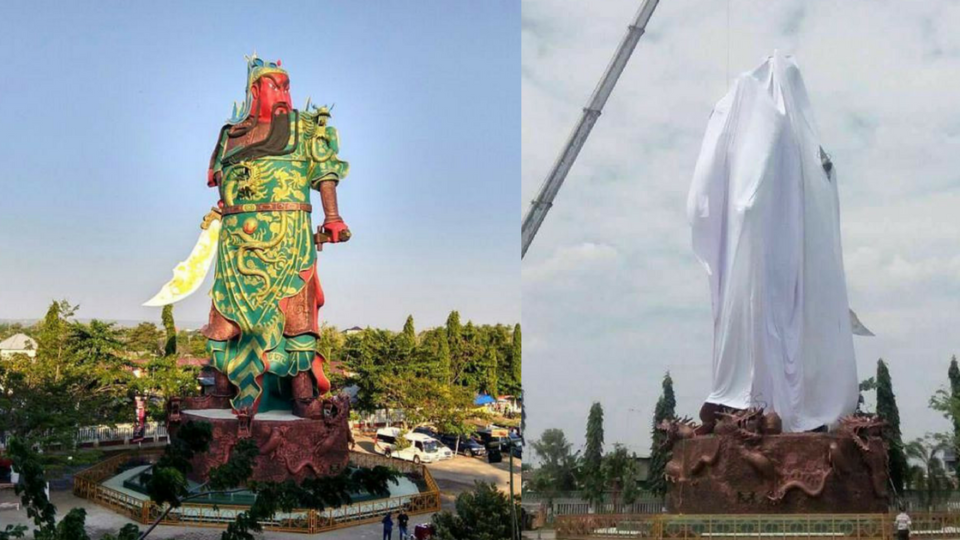A 30.4 meter tall statue of Guan Yu (a legendary Chinese general from the Three Kingdoms era who is also worshipped as a deity in Chinese folk religion) located in Kwan Sing Bio Temple in Tuban, East Java, was declared the tallest statue of the god in Southeast Asia by the World Record Museum of Indonesia (MURI) when it was unveiled in mid-July.
https://www.facebook.com/MURI.org/photos/a.642048342535876.1073741829.641971822543528/1556574631083238/?type=3&theater
But on Saturday, the statue earned a new distinction as the tallest statue in Southeast Asia to be covered up by a giant white cloth due to controversy.
https://www.facebook.com/photo.php?fbid=257106061466086&set=a.119357815240912.1073741828.100015000823995&type=3
The statue of Guan Yu (known in Indonesia as Kong Co Kwan Sing Tee Koen) was built over one and a half years at a cost of about Rp 2.5 billion, which was funded by private donations to the temple. It was even publicly inaugurated by prominent politician and chairman of the People’s Consultative Assembly (MPR), Zulkifli Hasan, on July 17, who said that he hoped it would become a tourist attraction for Tuban.
But immediately after the statue was officially presented to the public, it caused a huge amount of controversy on social media amongst the residents of Tuban, who are predominantly Muslim. Among the many negative comments the statue received were those who suspected the statue was a sign that the Chinese were in control the Indonesian government (a popular conspiracy theory amongst detractors of President Joko Widodo), rumors that the statue had been placed on public land (it is in fact fully contained within the temple’s grounds) and, most prominently, accusations that it was erected without all of the proper building permits.
The temple’s management supposedly made the decision to cover up the statue themselves, but only after receiving a recommendation from the local Forum on Religious Harmony (FUB, a quasi-governmental organization that is often used to decide matters of interreligious conflict).
The statue being covered up has certainly not extinguished protests over its existence. Today, dozens of members from various civil society organizations and NGOs held a rally in front of the East Java parliament building in Surabaya to demand that the statue be torn town.
The protest’s coordination, Didik Muadi, said the statue did not belong in Indonesia as the Chinese general did nothing to help Indonesia’s struggle for independence.
While Didik acknowledged that the temple did have permits to build the statue, he claimed that the way it was built violated the permit’s regulations.
“Actually we can allow them to build the statue, just not as high as it was and it should be in the temple, not outside. We are tolerant,” Didik said as quoted by Tempo.
Didik said that protesters would continue their calls to have the statue removed and replaced with one honoring Indonesia’s national heroes. He said that if the government did not accede to their demands, they would take it upon themselves to demolish it.
Perhaps they would also accept leaving the statue as it is, covered in white cloth, so that it could represent the ghost of Pancasila and Unity in Diversity.




